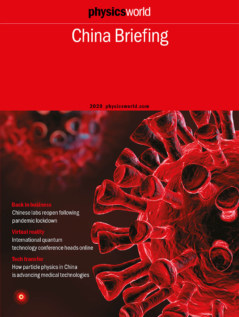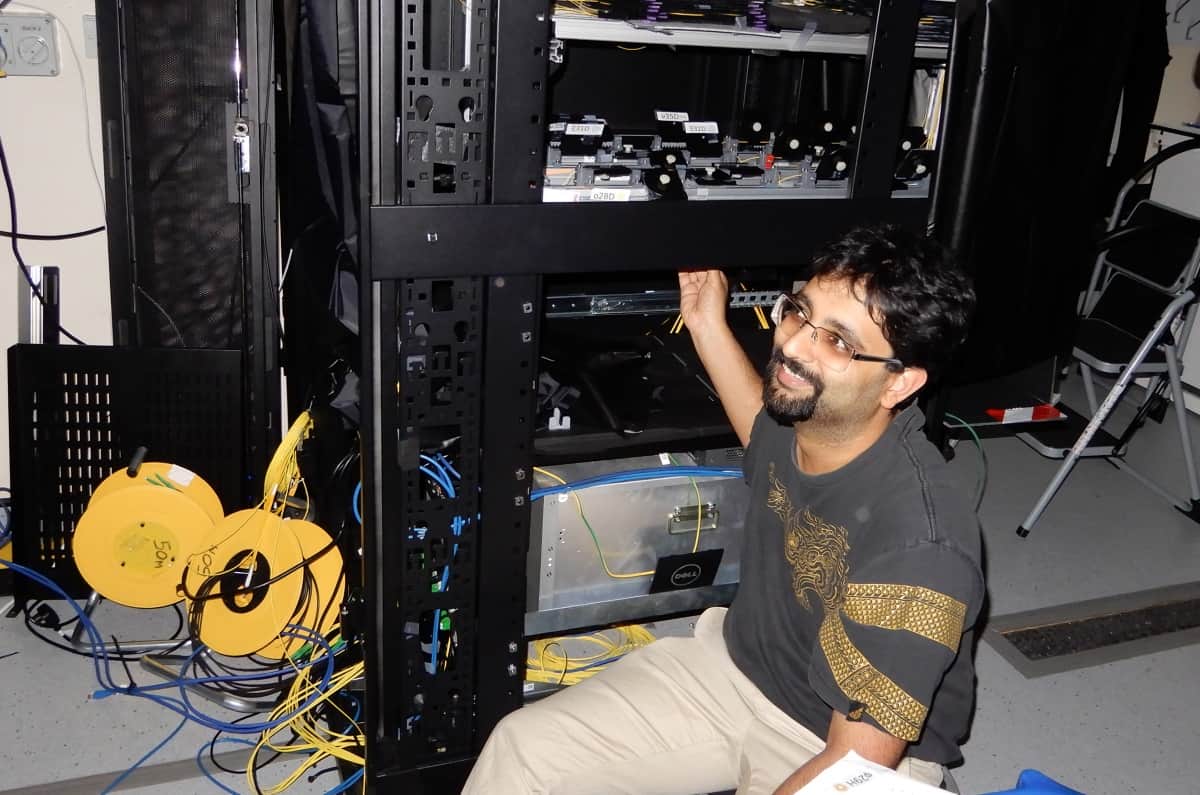Researchers in Korea have developed a new 3D display with a touchless interface that responds to the water vapour in a user’s hovering finger. The display, which relies on structural colour (that is, colour produced by light-scattering nanostructures) rather than reflections from coloured pigments, changes its hue depending on how far the user’s finger is from the screen. The technology might find use in wearable electronics and electronic skins that mimic how human skin can sense pressure, temperature and humidity.
Structural colours are often found in nature – for example, in the wings of some butterfly species. Because they arise from a physical structure (such as photonic crystals or arrays of nanofibers that reflect certain wavelengths of light), they are more durable than chemical pigments, which inevitably fade over time. Structural colours can also be changed by altering the molecular configuration of their surfaces. Both properties are attractive for novel “smart” materials used in interactive displays, and to this end researchers have long searched for ways to mimic the structural colours of the biological world.
Photonic crystal display
Most interactive displays made to date respond to external stimuli by varying the intensity of light they emit, rather than changing colour. The display made by Cheolmin Park and Won-Gun Koh and colleagues of Yonsei University in Seoul is different in that it is based on the multi-order reflection of structural colours in a thin, solid-state block copolymer (BCP) photonic crystal. This material spontaneously develops a layered 1D periodic microstructural film as it forms.
The nanostructured surface of the photonic crystal has a refractive index that varies with a period that is close to the wavelength of visible light. This variation produces a photonic “band gap” that affects how photons propagate through the material, much as a periodic potential in semiconductors affects the flow of electrons by defining allowed and forbidden energy bands. In the case of photonic crystals, light in the wavelength range that corresponds to the photonic band gap gets reflected, while light at other wavelengths is transmitted.
To achieve full-visible-range structural colours, the researchers used a BCP photonic crystal made from alternating layers, including a layer containing a chemically cross-linked interpenetrating hydrogel network. When the domains of this network are filled with a non-volatile ionic liquid (which alters the photonic crystal’s electronic properties), the subtle changes in water vapour levels that occur when a human finger is brought to within 1 to 15 mm from its surface are enough to shift the configuration of the surface structures to produce blue, green and orange colours.
Reflective colour mixing
These colour changes occur thanks to a phenomenon known as reflective colour mixing. When light hits the material’s surface, it couples with surface plasmons – collective excitations of electrons. These plasmons then become trapped in the surface, creating regions in which the dielectric constant of the structure is nearly zero, separated by areas of high refractive index. The presence of the non-volatile ionic liquid changes these dynamics and increases the reflection of different wavelengths of light thanks to two-colour mixing of pairs of reflections.

Scientists identify gene responsible for butterfly’s dazzling structural colours
The researchers also found that they could easily transfer their photonic crystal-based film from a silicon substrate onto another support (in this case a printed one-dollar bill). This means that the technology could be used in printable and rewritable displays, they say.
The touchless sensing display is detailed in Science Advances.
 This year has been dominated by one event: the SARS-CoV-2 coronavirus, which was first reported in Wuhan, China, before quickly spreading throughout the world. The severe impact of COVID-19, the disease caused by the coronavirus, has been felt by all and physicists are no exception. Universities and research facilities all shut their doors earlier this year as scientists headed home under lockdown.
This year has been dominated by one event: the SARS-CoV-2 coronavirus, which was first reported in Wuhan, China, before quickly spreading throughout the world. The severe impact of COVID-19, the disease caused by the coronavirus, has been felt by all and physicists are no exception. Universities and research facilities all shut their doors earlier this year as scientists headed home under lockdown.
 Task Group 233 provides new guidance for CT performance assessment and addresses the challenges inherent in established CT imaging quality metrics. The Mercury 4.0 Phantom, designed by Dr Ehsan Samei at Duke University and commercialized by Gammex, now Sun Nuclear Corporation, assists with evaluations outlined in TG-233.
Task Group 233 provides new guidance for CT performance assessment and addresses the challenges inherent in established CT imaging quality metrics. The Mercury 4.0 Phantom, designed by Dr Ehsan Samei at Duke University and commercialized by Gammex, now Sun Nuclear Corporation, assists with evaluations outlined in TG-233.


